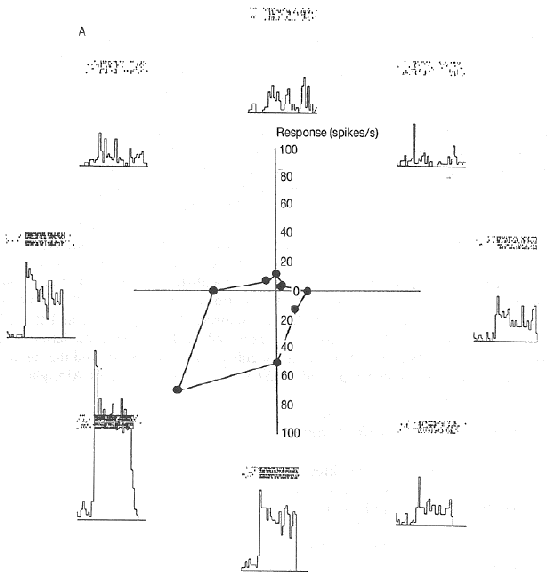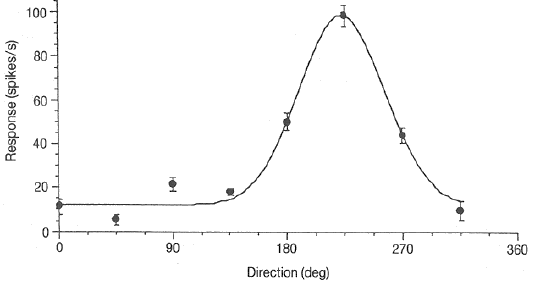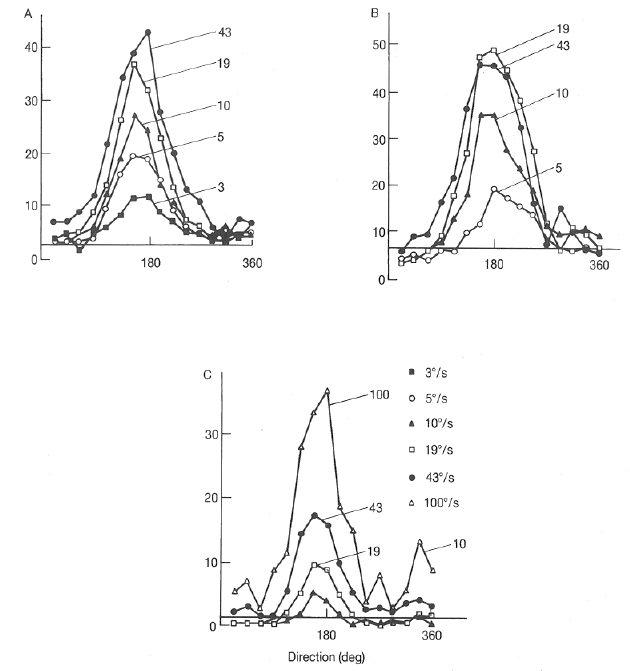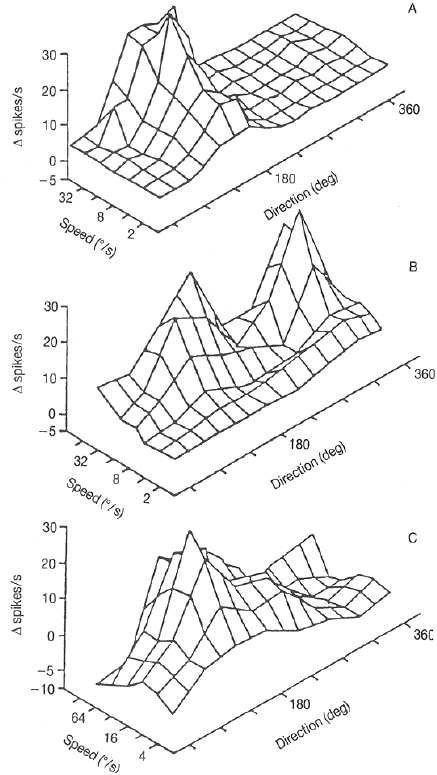


Next: Modeling motion integration in
Up: Detection of Global Motion
Previous: The aperture problem and
The V1 cells (layer 4B) that project to MT have the following properties
[26]:
- They are direction selective, but are relatively poorly tuned for
orientation and spatial frequency;
- They are insensitive to color;
- They have large receptive field for V1 cells.
These properties generally resemble the MT cells they project to. Similar
to these V1 cells, almost all neurons in the MT area are known to be
selectively responsive to orientation and velocity of visual motion (both
speed and direction). However, there are major response differences between
the neurons in V1 and MT, as listed below [27],
[28], [29], [35],
[39]. All these findings show that V1 is an upstream
visual area of MT, and it provides important visual input to MT.
- The receptive fields of MT neurons are generally an order of magnitude
larger than that of the V1 neurons at equivalent eccentricities.
The MT neurons are directionally selective for higher speeds
(
 to
to
 )
than the V1 neurons
(
)
than the V1 neurons
(
 to
to
 ), The direction tuning of MT
neurons (bandwidth
), The direction tuning of MT
neurons (bandwidth
 )
is wider than that of the V1 neurons
(bandwidth
)
is wider than that of the V1 neurons
(bandwidth
 ).
).
- There are two types MT neurons. The first type, called component
MT neurons, responds to the velocity of the local motion. The
component MT cells are subject to the aperture problem, just like
the velocity selective V1 cells. The second type, called pattern
MT neurons, responds to the true 2D global motion of a visual
pattern (the pattern motion).
- The V1 and MT cells respond differently to transparent motions which have
more than one velocity vector at each location in the visual field
(usually two local velocities of different directions). V1 cells can
respond to their preferred directions of movement under transparent
conditions, whereas MT cells are suppressed when two motions are in
opposite directions ([40]).
- Some non-motion segmentation cues also influence visual motion detection
at both the neuronal and perceptual levels. For example, when two
grating patterns moving in different directions across each other, a
subject will perceive either two grating motions if the luminance of
the intersection areas of the gratings is such that the gratings are
perceptually transparent, or a coherent plaid motion when the luminance
of the intersection areas is either too high or too low for the
perceptual transparency [44]. Consistent result
was also found later at the neuronal level in the MT area
[45].







Next: Modeling motion integration in
Up: Detection of Global Motion
Previous: The aperture problem and
Ruye Wang
2000-04-25



